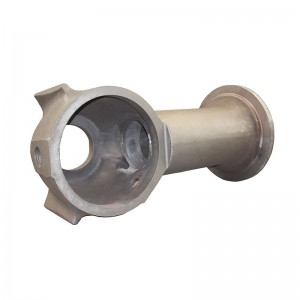ਸਤੰ. . 02, 2024 08:52 Back to list
Efficient Heat Exchanger Thermal Transfer Solutions
Understanding Heat Exchanger Thermal Transfer Principles and Applications
Heat exchangers are pivotal components in various industrial processes, enhancing energy efficiency and transfer of thermal energy. A heat exchanger operates on the principle of transferring heat between two or more fluids without mixing them. This technology is crucial in applications ranging from power generation, refrigeration, and chemical processing to HVAC systems.
At the core of heat exchanger functioning is the concept of thermal transfer, which involves three fundamental modes conduction, convection, and radiation. However, in most heat exchangers, conduction and convection play the predominant roles. Conduction is the process where heat moves through a solid material—typically the wall of the heat exchanger—while convection involves the movement of heat through the fluids.
When discussing the efficiency of a heat exchanger, the concept of heat transfer rate becomes essential. The heat transfer rate is influenced by several factors, including the temperature difference between the two fluids, the surface area of the heat exchanger, the specific heat capacities of the fluids, and the nature of the flow (whether it is laminar or turbulent).
The design of heat exchangers can be categorized into various types, each optimized for specific applications. The most common configurations include shell and tube, plate, and air-cooled heat exchangers. Shell and tube heat exchangers consist of a series of tubes, one set carrying the heating fluid and the other the fluid to be heated, allowing for efficient thermal exchange. On the other hand, plate heat exchangers provide a higher surface area for heat transfer in a more compact design, making them suitable for industries where space is a premium.
heat exchanger thermal transfer

In industries grappling with sustainability challenges, heat exchangers offer significant advantages by enhancing energy recovery and minimizing waste. For instance, in power plants, they are utilized to recover heat from exhaust gases, thus improving overall efficiency. Similarly, in refrigeration systems, heat exchangers help in effective heat rejection, which is vital for maintaining the desired cooling load.
Moreover, the performance of heat exchangers can be optimized through various means such as enhancing the surface area, increasing the turbulent flow, and employing advanced materials that offer better thermal conductivity. Innovative designs, like the use of nanofluids, are also gaining traction, allowing for improved thermal performance due to their enhanced heat transfer characteristics.
In recent years, the advent of digital technologies has transformed the monitoring and management of heat exchangers. With the integration of IoT (Internet of Things) sensors and data analytics, operators can now monitor temperature, pressure, and flow rates in real-time. This not only helps in operational efficiency but also facilitates predictive maintenance, reducing downtime and extending the lifespan of the equipment.
As the demand for energy-efficient solutions escalates in various sectors, the role of heat exchangers becomes increasingly significant
. They are vital not only for optimizing thermal processes but also for fostering sustainable practices by reducing energy consumption and minimizing environmental impact.In conclusion, heat exchangers are indispensable in facilitating thermal transfer across a multitude of applications. Their ability to enhance energy efficiency, coupled with ongoing innovations in design and technology, underscores their importance in the future of industrial processes and energy conservation efforts. As we move towards a more sustainable future, mastering the principles of heat exchanger thermal transfer will remain a priority for engineers and industry professionals alike.
-
Durable Centrifugally Cast Iron Water Main Pipe
NewsAug.11,2025
-
Centrifugally Cast Iron Water Main Pipes for Reliability
NewsAug.10,2025
-
High-Quality Centrifugally Cast Iron Water Main Pipes
NewsAug.09,2025
-
Durable Cast Iron Water Main Pipe & Drainage Solutions
NewsAug.08,2025
-
Buy Cast Iron Pipe: Premium Ductile Iron & Drain Solutions
NewsAug.07,2025
-
Durable Cast Iron Water Main Pipe | Buy Ductile Pipe
NewsAug.06,2025


